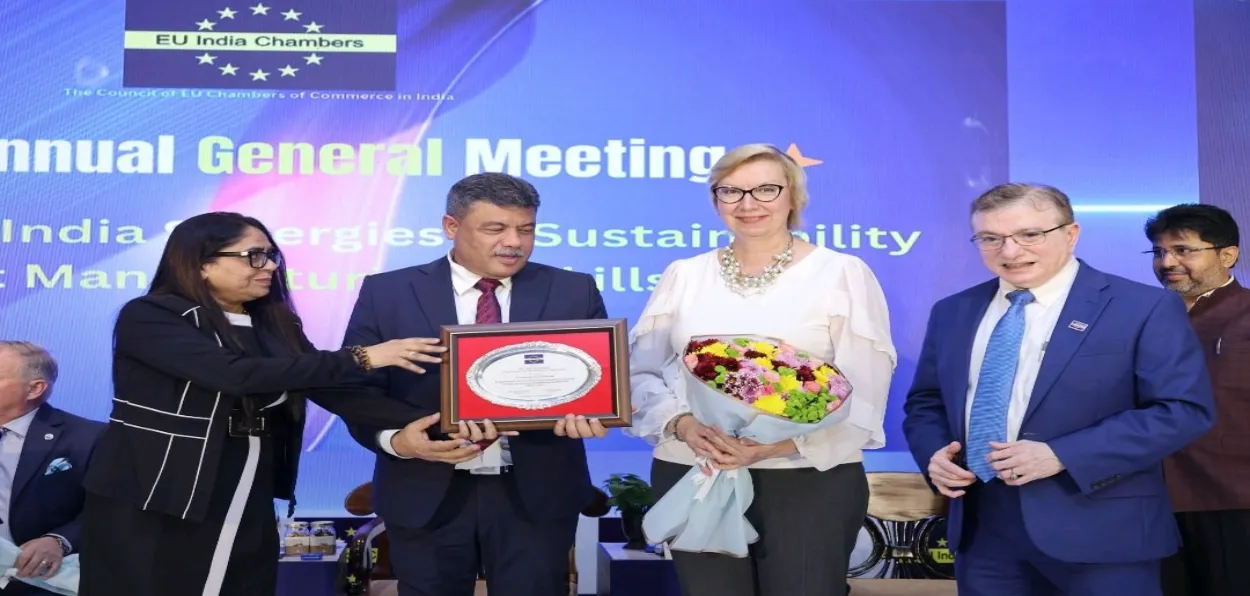
 Sushma Ramachandran
Sushma Ramachandran
India’s ties with the European Union are coming into greater prominence as the deepening economic partnership has been extended into the strategic arena. The two sides have unveiled the “New Strategic EU-India Agenda,” which identifies five areas of shared interest, including security and defence, connectivity and global issues, prosperity, sustainability, technology, and innovation. Along with the proposed free trade agreement, which is expected to be finalised shortly, this brings India-EU ties to a pivotal stage.
The new strategic agenda covers a wide swath, including the India-Middle East-Europe Economic Corridor (IMEC), while seeking to promote trilateral initiatives in third countries. Closer cooperation on the Indo-Pacific region, along with engagement on Russia’s war in Ukraine, as well as sanctions, are among the other focus areas.
The uptick in ties comes just days after the visit of two EU Commissioners to work out the nitty-gritty of the proposed free trade pact. Yet India-EU ties have not received enough attention in recent months, with headlines dominated by Trump and tariffs.
What is often lost sight of in the tumult over American tariffs is that bilateral trade with the EU is about 137.5 billion dollars, higher than the 131.8 billion dollars with the U.S. The EU is thus India’s biggest trading partner. The importance of trade ties with the world’s most powerful economic bloc is now gradually becoming recognised as the proposed free trade deal between India and the EU is on the verge of being concluded.
It is just as negotiations between the two sides have reached the last lap that the Trump administration decided to harangue Europe about the need to impose hefty tariffs on both India and China. These are positioned as economic sanctions that would weaken the Russian economy and lead to a speedy resolution of the Ukraine conflict. It began with Trump urging the imposition of tariffs ranging from 50 to 100 per cent on the two biggest buyers of Russian oil at a meeting between U.S. and EU officials. U.S. Treasury Secretary Scott Bessent then urged the Group of Seven advanced economies to impose punitive tariffs in response to these countries’ purchases of Russian oil.
This was followed up by Trump claiming in an interview that much had been done to punish Moscow, including expanded tariffs on India, while arguing this was a European rather than American problem. He then called on NATO countries to levy 100 per cent tariffs on China.
In other words, Trump is hammering the fact that the Ukraine-Russia conflict is Europe’s war, and secondary sanctions on both India and China are the only way to bring it to a quick end. The decibel levels may be rising from the U.S., but the EU has so far adopted an independent stance. It has not voiced any preference to use tariffs as secondary sanctions to end the war. Instead, it seems to be looking for ways to reduce dependence on Russian energy. Till such reliance continues, it would be difficult to legitimately impose any punitive measures against trade partners like India or China.
This brings us to the reality of the EU-Russia economic relationship, which has continued even after four years of the war. Bilateral trade is estimated at 78.1 billion dollars in 2024, with the bulk of the EU’s imports being fuel. Russian gas imports may have fallen considerably, but have yet to be eliminated. The EU’s imports of Russian natural gas are reported to have fallen from 40 per cent of its total requirements to about 19 per cent, including imports of liquefied natural gas (LNG). At this level of trade, criticising India for buying Russian energy can only be termed an obvious case of double standards.
Trump’s fulminations are thus unlikely to have an impact on the contours of the India-EU free trade deal. In fact, there has been an urgency on both sides to lock the agreement as a foil to Trump’s tariff offensives. Both India and the EU are looking to pivot away from the U.S. market, which has been the biggest global consumer in the past. With 50 percent tariffs having been imposed by the U.S., Indian exporters are scrambling to find alternative destinations. Similarly, the EU sees the potential of the growing middle class in India as a fast-expanding area of consumption to absorb its products.
Both sides, therefore, are carrying out the talks with renewed vigour in a spirit of greater flexibility and compromise than in the past. Negotiations for a free trade pact originally began in 2007 and stalled in 2013. These were revived in 2022. India’s earlier rigidity on market access for wines, spirits, and automobiles has eased, while the EU is softening terms for the entry of labour-intensive products and fisheries, impacted by the Trump tariffs.
The drive to ramp up talks on the India-EU trade pact has much to do with the external headwinds being faced by both sides. Though the EU has concluded a free trade agreement with the U.S., it has had to make concessions in terms of offering sizable investments. Europe is now seeking to shift focus to an economy that is currently the fastest-growing in the world. India is also seeking new export markets to mitigate the impact of U.S. tariffs.
ALSO READ: Mand exponent Batool Begum is a living legend of Indian culture
Yet the free trade agreement must now be viewed as part of a broader elevation of the India-Europe relationship. This does not mean that differences between the two sides have been eliminated. The EU continues to express concern over India’s purchases of Russian oil, as well as the recent round of joint military exercises with that country. Yet it is taking a mature and long-term approach as deepening ties with the world’s biggest democracy is a pragmatic move in the backdrop of growing geopolitical tensions and economic uncertainty.
